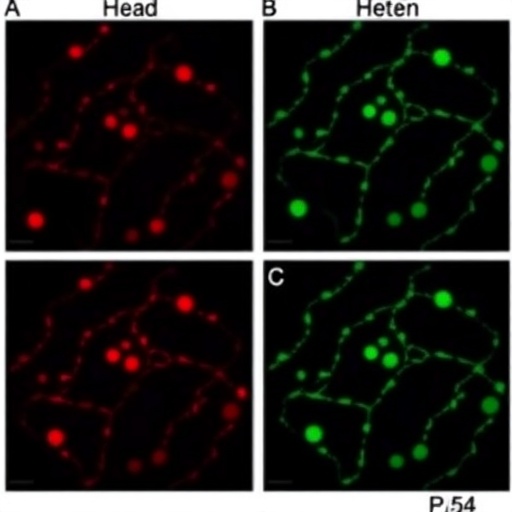In recent years, the forensic community has grappled with the complexities of interpreting post-mortem toxicological data, particularly in cases involving opioid-related fatalities. Among these, methadone—a synthetic opioid widely used for opioid substitution therapy and chronic pain management—presents unique challenges due to its pharmacokinetic profile and post-mortem redistribution phenomena. A groundbreaking study published in the International Journal of Legal Medicine by Pelletti et al. (2025) sheds new light on the characterization of post-mortem blood concentrations in methadone-related deaths, offering critical insights that could revolutionize medico-legal investigations and contribute to more accurate cause-of-death determinations.
Understanding methadone’s behavior after death has been an elusive task, as forensic experts must navigate the intricacies of its absorption, distribution, metabolism, and elimination to avoid misinterpretations. Methadone’s long half-life and the potential for post-mortem redistribution—the movement of drugs from tissues back into the blood—often complicate the correlation between circulating drug levels and toxic effects. Pelletti and colleagues have meticulously analyzed an extensive database of methadone-related fatalities, employing advanced analytical methods to establish reference post-mortem concentrations and to delineate patterns that differentiate between therapeutic, toxic, and lethal levels.
The study’s core innovation lies in its comprehensive approach to sample collection and analytical rigor. By stratifying specimens based on collection sites—such as femoral, cardiac, and peripheral blood—the researchers underscore significant discrepancies attributable to post-mortem redistribution. Their findings highlight femoral vein samples as the most reliable indicator of ante-mortem blood drug levels, emphasizing the importance of standardized sampling protocols in forensic toxicology to avoid overestimation or underestimation of methadone concentrations.
Moreover, the investigation delves into the influence of co-intoxicants, notably benzodiazepines, alcohol, and other opioids, which frequently accompany methadone in overdose cases. The synergistic depressant effects exacerbate respiratory failure risk, complicating toxicological interpretations. Pelletti et al.’s data confirm that simple numeric thresholds for methadone concentrations cannot suffice when co-ingestants are present, advocating for a holistic interpretative model incorporating pharmacological interactions and case histories.
Pharmacogenetics also emerges as a pivotal factor in the variability of methadone blood levels post-mortem. The study touches upon genetic polymorphisms affecting cytochrome P450 enzymes responsible for methadone metabolism, suggesting that personalized metabolic rates contribute to the range of observed concentrations at death. This recognition opens pathways for integrating genetic data into forensic toxicology, potentially transforming the assessment of cause-and-effect relationships in opioid fatalities.
The methodological framework includes state-of-the-art liquid chromatography-tandem mass spectrometry (LC-MS/MS), offering unparalleled sensitivity and specificity. Implementing this technology enables detection of methadone and its metabolites at trace levels, refining the interpretative precision of toxicological reports. Such advancements underscore the evolution of forensic instrumentation, reinforcing the critical role of technological innovation in achieving judicial accuracy.
Significantly, the researchers expose the temporal aspect of methadone-related deaths, emphasizing PM interval as an influential variable. The study accounts for the time elapsed between death and sample collection, revealing dynamic changes in drug concentrations that may mislead interpretations if uncorrected. Therefore, the forensic community must factor in post-mortem interval to avoid erroneous conclusions about overdose versus tolerance-related deaths.
The comprehensive dataset analyzed reflects diverse demographic and clinical backgrounds, including variables such as age, sex, polypharmacy, and treatment adherence. This heterogeneity enhances the applicability of the findings across multiple forensic scenarios. For practitioners, this means that methadone toxicity assessments increasingly demand contextual awareness beyond mere quantification.
Furthermore, Pelletti et al.’s investigation explores methadone’s stereoselective metabolism, differentiating between the R- and S-enantiomers, which have distinct pharmacological activities. This nuanced analysis could provide forensic experts with enhanced discriminatory power to link smaller doses or chronic use with fatal outcomes, thereby refining our understanding of methadone’s toxicodynamics post-mortem.
The implications of this research extend beyond the forensic realm; public health policies on methadone maintenance therapy may benefit from refined guidance on dosage limits and monitoring strategies informed by post-mortem toxicology patterns. Clinicians, toxicologists, and law enforcement agencies stand to gain from these insights as they endeavor to balance therapeutic use with overdose risk mitigation.
Importantly, the study advocates for establishing international consensus on methadone post-mortem concentration reference ranges, which currently vary widely and contribute to inconsistent medicolegal interpretations. Such harmonization efforts could foster global improvements in opioid overdose investigations, aiding in more effective legal proceedings and public health interventions.
The role of external factors, including storage conditions, temperature, and decomposition, in altering methadone levels after death also receives attention. These considerations reinforce the delicate nature of post-mortem specimens and the necessity for timely and standardized handling to preserve analytical integrity.
Ethical aspects surrounding post-mortem drug analysis are subtly acknowledged, particularly concerning the stigmatization of individuals with opioid use disorder. Accurate forensic data not only serve justice but also humanize decedents, informing prevention strategies that prioritize compassion and science over judgment.
Overall, the comprehensive characterization of post-mortem methadone concentrations elucidated by Pelletti et al. stands as a monumental advancement in forensic toxicology. It empowers forensic experts with refined tools to distinguish between accidental overdose, intentional self-harm, and therapeutic non-compliance—the triad that constitutes the majority of opioid-related deaths.
As the opioid crisis continues to challenge societies worldwide, integrating such rigorous scientific evidence into forensic practice is paramount. This study heralds a future where justice is served with precision, victims’ stories are accurately told, and preventive measures are informed by robust, data-driven understanding of opioid pharmacology post-mortem.
The work of Pelletti and collaborators, by bridging analytical chemistry, pharmacology, genetics, and clinical toxicology, exemplifies the multidisciplinary approach necessary to tackle complex forensic challenges. It also sets a new benchmark for future investigations into post-mortem drug analysis, inspiring continuous exploration and technological refinement.
Moving forward, the forensic community must embrace these findings while advocating for collaborative efforts that unify practitioners, researchers, and policymakers worldwide. Only then can the battle against opioid fatalities be fought with the comprehensive knowledge base necessary to effect lasting change.
Subject of Research:
Article Title:
Article References:
Pelletti, G., Giunchi, V., Fais, P. et al. Characterizing post-mortem blood concentrations in methadone-related deaths.
Int J Legal Med (2025). https://doi.org/10.1007/s00414-025-03620-0
Image Credits: AI Generated
DOI: https://doi.org/10.1007/s00414-025-03620-0
Keywords: methadone, post-mortem toxicology, opioid fatalities, forensic toxicology, post-mortem redistribution, pharmacogenetics, LC-MS/MS, opioid overdose
Tags: advanced analytical methods in forensicsblood concentration analysis in toxicologychallenges in interpreting post-mortem dataforensic science and opioid deathsmedico-legal implications of methadonemethadone levels in fatalitiesopioid substitution therapy and methadoneopioid-related death investigationspharmacokinetics of methadonepost-mortem redistribution of drugspost-mortem toxicology analysisreference levels for methadone toxicity





